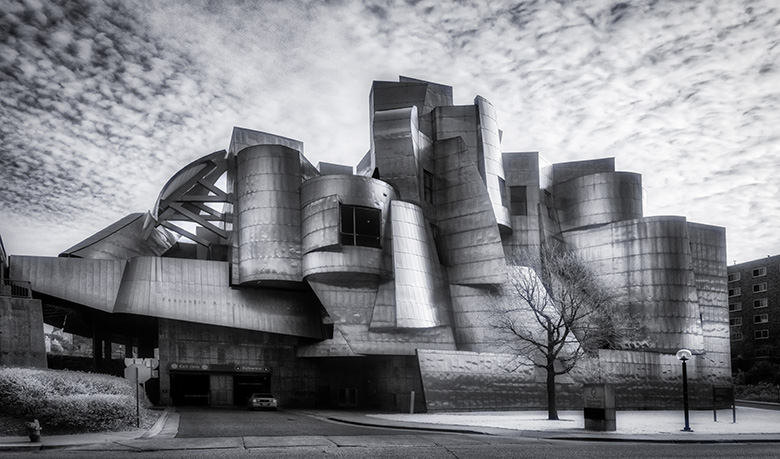
by successfulbob | architectural photography, infrared photography, landscape photography, Lumix G6, LumixGH5, photography creativity
Infrared Capture for Photographing Architecture
We don’t necessarily think about using IR capture when taking everyday images of architecture. It can give you a different look. And I like it.
Always the difference will be dependent upon what the final image use will be. Since I am my client when doing architecture images for art presentation, I get to choose. I’ll show you a couple of different captures and let you decide. Let me know what you think.
 Weisman Museum IR capture Lumix G6 Camera converted to Infrared Capture by LifePixel Processed in Adobe Camera RAW and Skylum (AKA MacPhun’s) Luminar
Weisman Museum IR capture Lumix G6 Camera converted to Infrared Capture by LifePixel Processed in Adobe Camera RAW and Skylum (AKA MacPhun’s) Luminar
I think the infrared gave this image a bit of an otherworld feeling complementing otherworld style architecture.
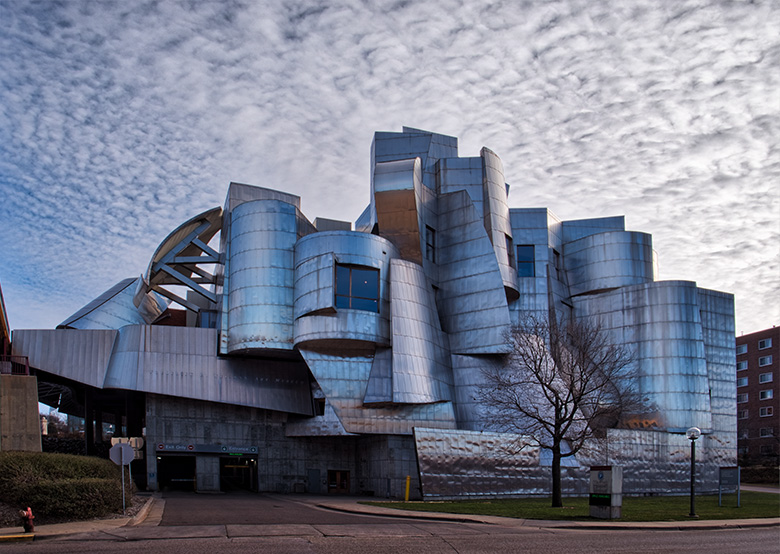 Here’s a color capture made with the Lumix GH5. Processed in Adobe Camera RAW and Skylum (AKA MacPhun’s) Luminar
Here’s a color capture made with the Lumix GH5. Processed in Adobe Camera RAW and Skylum (AKA MacPhun’s) Luminar
I always try to work a subject over and above a straight-forward rendition. This includes different angles, framing, and processing. See a couple of images below for examples. I would have tried quite a few different ideas, but I stopped on my way to the airport and didn’t want to miss my flight. Art suffers from a tight schedule!
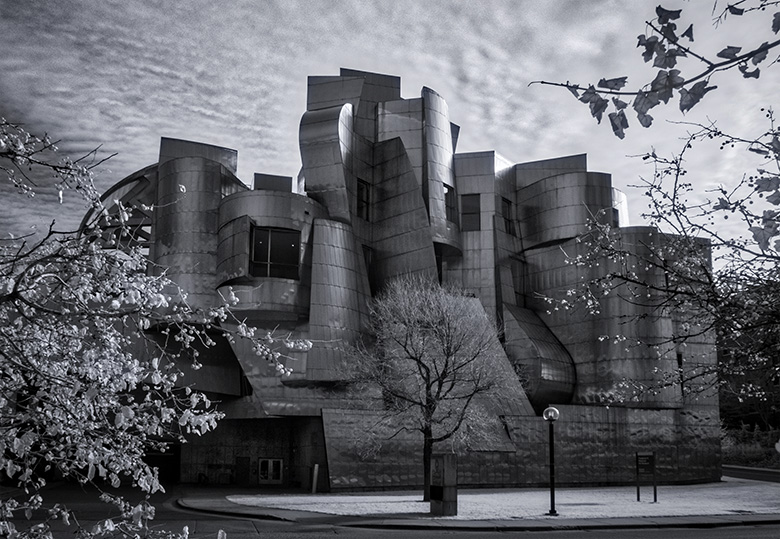 While not showing off the architecture quite as much I feel the framing made for a more interesting photo.
While not showing off the architecture quite as much I feel the framing made for a more interesting photo.
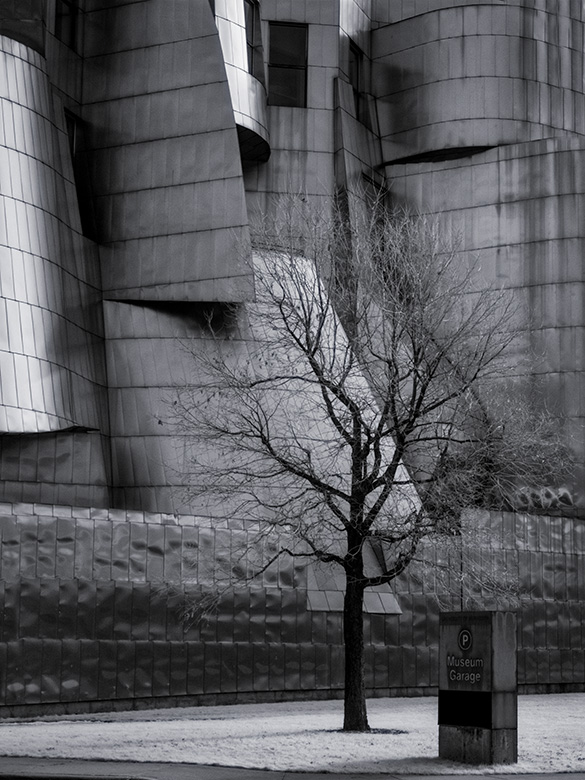 Details can always add to the story. I liked the barren tree against the architecture in this image.
Details can always add to the story. I liked the barren tree against the architecture in this image.
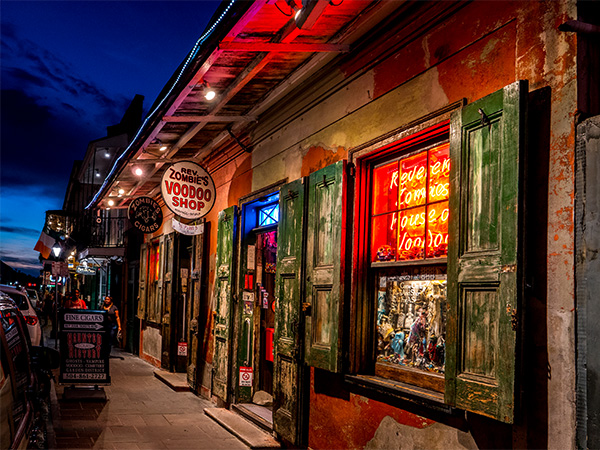
by successfulbob | architectural photography, HDR photography, Lumix Lounge, LumixGH5, photography software
Density Range of the Lumix GH5
Mucking about in New Orleans while in town speaking at the Professional Photographers Association of Louisiana last week. I took my relatively new ** Lumix GH5 and the Leica 12-60mm f2.8-4.0 lens out for a solid workout, keeping my camera with me at all times recording lots of different situations. It was a real eye-opener seeing what the camera was capable of recording.
Here is a great example of what got me very excited. As I was prowling the French Quarter just about dark after the sun fell below the horizon I captured this image of the Rev Zombie’s Voodoo Shop.
 Photo made from one image. No HDR involved. Detail in shadows and detail in the neon sign.
Photo made from one image. No HDR involved. Detail in shadows and detail in the neon sign.
 HDR sequence in the original capture. I used the middle exposure for the image processed above.
HDR sequence in the original capture. I used the middle exposure for the image processed above.
When out photographing random areas if I’m not certain that the camera can capture the entire dynamic range in a single image I’ll run a five stop bracket of the scene and then process the images in Aurora HDR software. I use Aurora because I’ve been able to achieve realistic results on a regular basis.
Just for fun I decided to forego the HDR software and see what I could pull from a single image just utilizing Adobe Camera RAW. There’s full detail in the brightest areas of the image and details in the shadows and the color is spot on for the scene.
Could I have made an even better image using the HDR software? Let’s see.
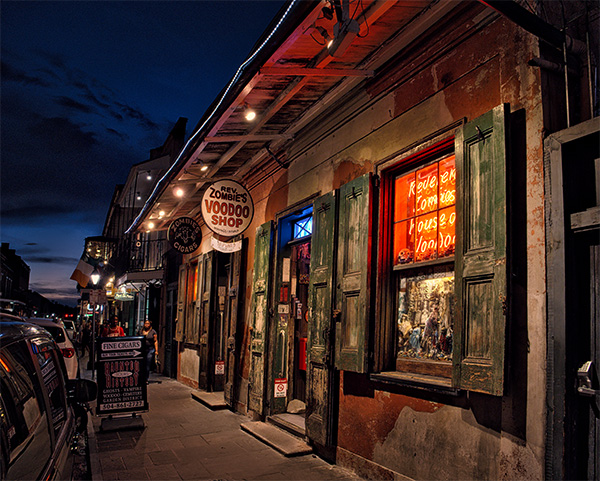 I’ll leave the decision up to to you. I seem to have been able to pull some more shadow detail. Lots of options are available in making the image tell the story we want these days. An exciting time in photography indeed.
I’ll leave the decision up to to you. I seem to have been able to pull some more shadow detail. Lots of options are available in making the image tell the story we want these days. An exciting time in photography indeed.
Yours in Creative Photography, Bob
** Smokin’ deal alert! Panasonic has bundled this camera lens combo for about $2600 saving 400 bucks from separate purchase.
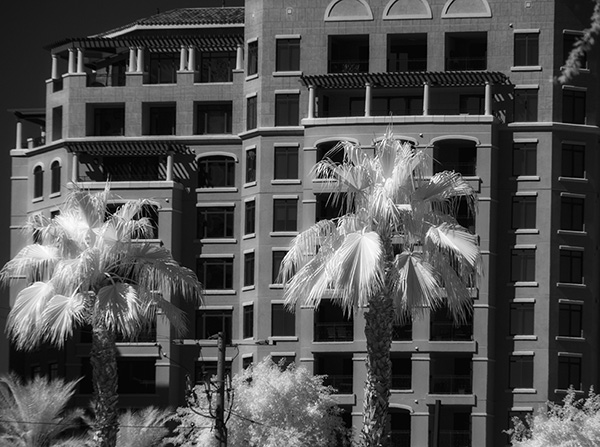
by successfulbob | architectural photography, black & white, infrared photography, Lumix G6, photo walkabout, photography, photography creativity, photography gear
Wandering – Scottsdale, Arizona
Today is the start of a new feature here on the Successful-Photographer blog. Wandering will have images from a walk around a place with no other objective than to see what images might be gathered. Wandering is a way to keep your eye sharp and experiment with new ideas or test out new gear.
The first stop on the SP wandering tour is Downtown Scottsdale, Arizona. Scottsdale is a high-end community with lots of art galleries and interesting new architecture mixed with buildings built in the ’20’s. I was down in the Valley of the Sun for meetings that started in early morning and stretched into the night with some downtime in the middle of the day. With full sun basting the town I thought it would be fun to put the infrared camera through some paces. For convenience, I mounted the 14-140mm (28-280mm full frame equivalent) on the LifePixel converted IR and set off to see what I could capture.
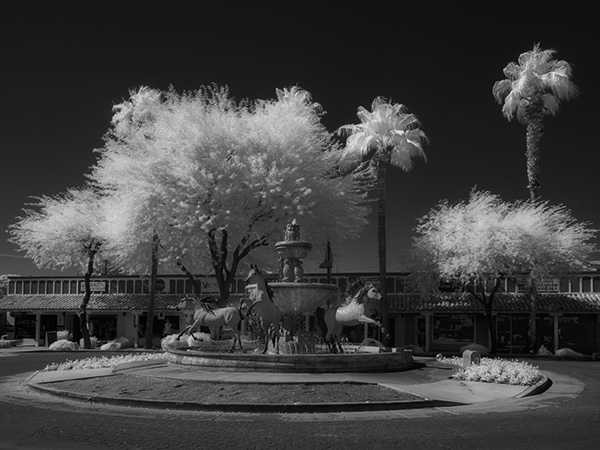 Fountain on the central circle.
Fountain on the central circle.
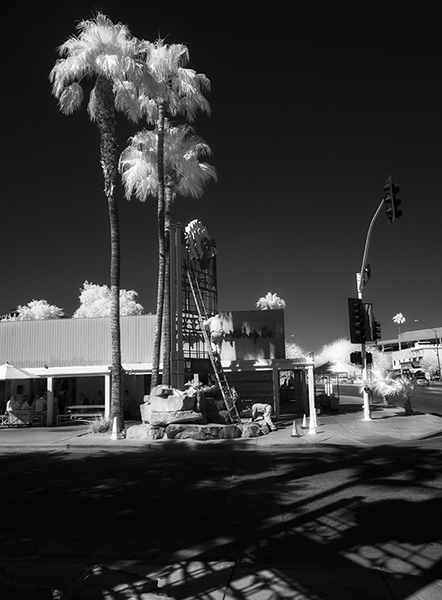 Working on the sign under the palms.
Working on the sign under the palms.
 Glowing palms against the modern architecture.
Glowing palms against the modern architecture.
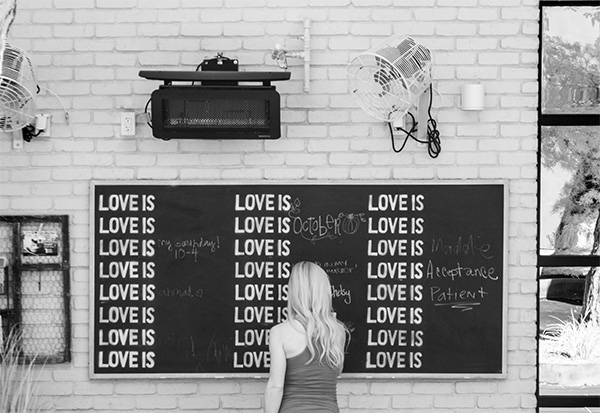 ‘Love is…’ bulletin-blackboard outside a restaurant. Even though there was no full sun the infrared capture renders this scene with lots of contrast.
‘Love is…’ bulletin-blackboard outside a restaurant. Even though there was no full sun the infrared capture renders this scene with lots of contrast.
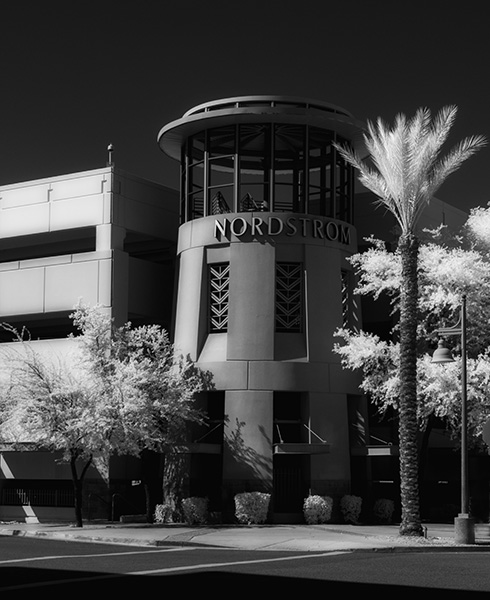 Nordstroms tower architectural detail.
Nordstroms tower architectural detail.
Always having a camera with you allows you to take downtime and turn it into a learning experience. With the light weight and quality of the micro four thirds cameras, it’s easier than ever to always have a reliable capture device with you.
It’s a great time to be a photographic artist.
Yours in creative Photography, Bob
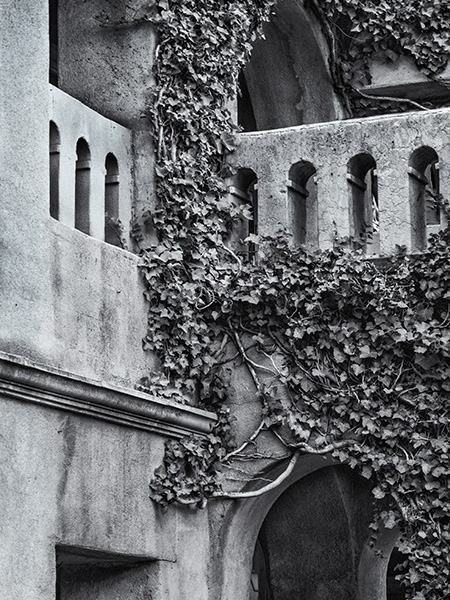
by successfulbob | architectural photography, black & white, Lumix GX8, photography, photography creativity, photography gear
Processing Black & White Photography
Ansel said it.
He likened great photography to a concert. The Print is the performance. The capture is merely the score.
OK. Maybe I paraphrased a little bit but the idea is there. And the word ‘merely’ is undercutting the value of the capture. But, by virtue of the camera only having one opening it can only see so much density in a single exposure. How we process the image is a huge part of the success or failure of the photo.
We now have some technological advantages over Adams with software that allows up to combine multiple images t different exposures to expand the amount of information we can have in a single file. We can build up density and exposure in a picture without resorting to chemistry changes as Adams did. In addition to Curves and Levels, we now have the ability to add luminance masks to target very specific tones within the photo. Sharpening can be selectively applied throughout the image to help move a viewer’s attention through the image. And more. We are in a golden age of photography should we choose to follow the possibilities.
I was attending a little courtyard guitar concert at Tlaqapaque in Sedona and just happened to have a camera with me. (imagine that!) Here are a couple grabs where the image definitely has more power in black and white.
 Tlaqapaque detail. Mexican shopping Village in Sedona, AZ
Tlaqapaque detail. Mexican shopping Village in Sedona, AZ
Images processed in Adobe Camera RAW & Nik Silver FX Pro 2 (You can get this software plugin for free)
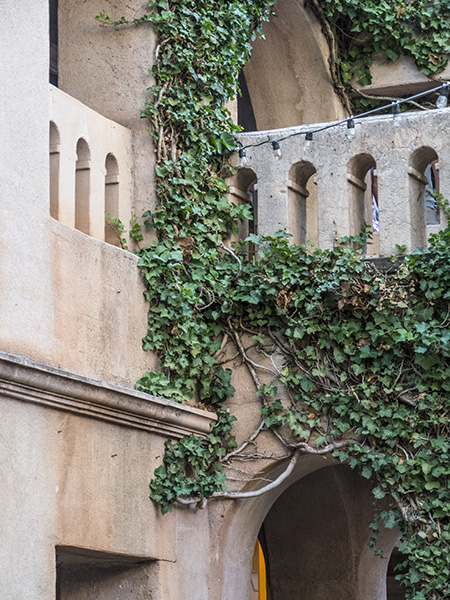 Original capture
Original capture
Images captured with Lumix GX8 with 14-140mm f3.5-5.8 lens
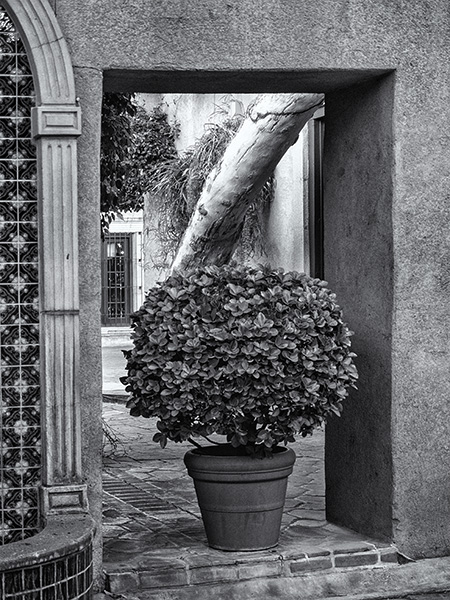 Portals within portals within portals add depth and dimension to an image
Portals within portals within portals add depth and dimension to an image
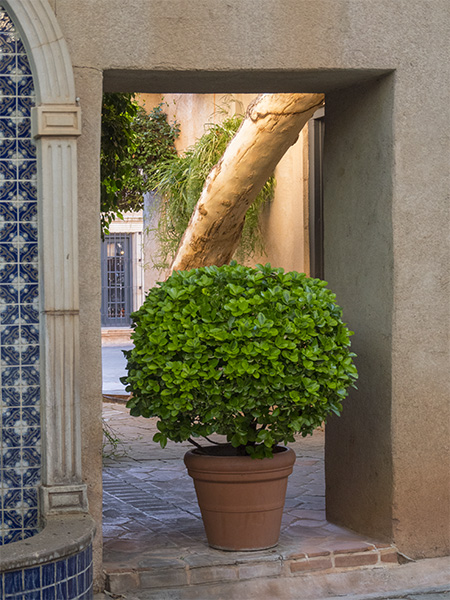 Original capture
Original capture
I’ll be doing a more in-depth blog post on black and white processing on LifePixel’s website. You can look for it early next week.
Yours in Creative Photography, Bob
Save
Save
by successfulbob | architectural photography, commercial photography, Lumix GH4, Lumix Lounge
Marketing & Advertising Photos – Interior
I’ve been photographing advertising and marketing images for Sound Bites Grill in Sedona for the last four years. It’s been great working with Steve & Michele. We’ve been collaborating since before the restaurant opened. They have just redone some decor adding to the collection of guitars displayed on the walls and they understand the need for keeping the imagery fresh and up-to-date.
I made these images with the Lumix GH4, some supplemental lighting and HDR captures. Images were completed using post production in Adobe Photoshop.
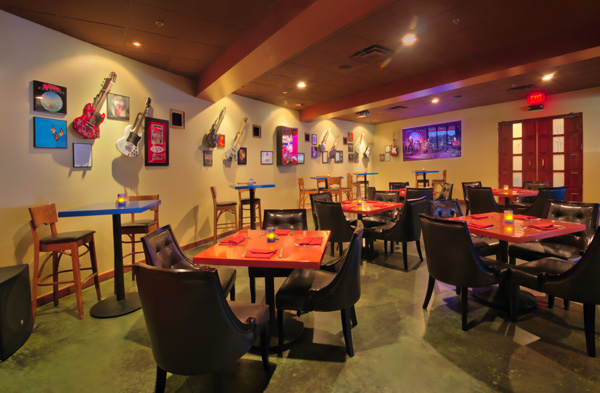
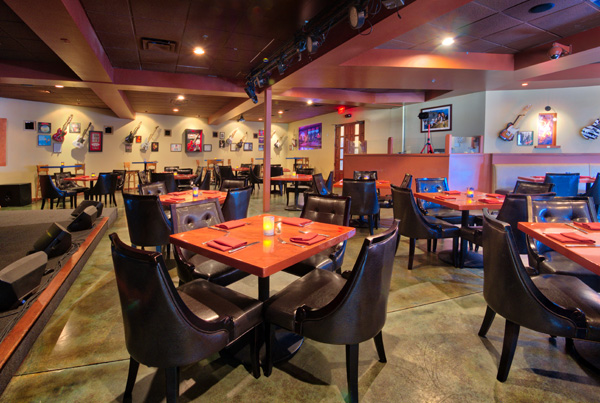
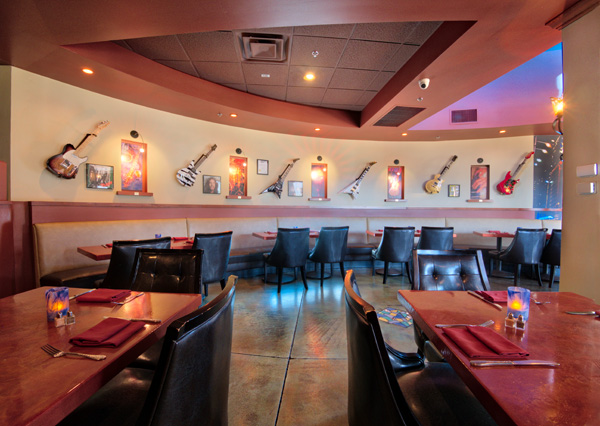
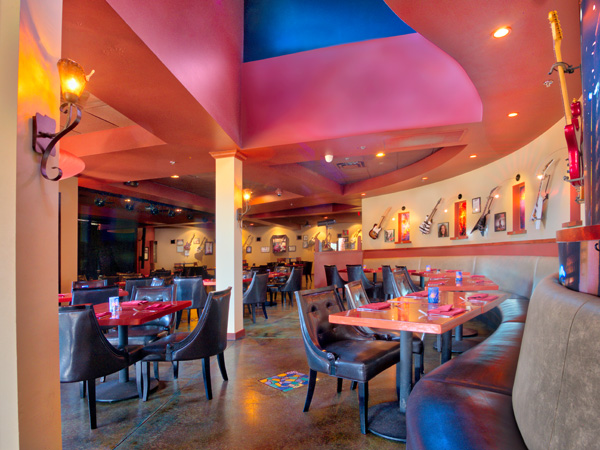
Different views of Sound Bites Grill interior advertising photos.
Yours in Creative Photography, Bob
by successfulbob | architectural photography, HDR photography, Lumix GH4, Lumix Lounge, photography education, photography software
HDR Software
HDR. High Dynamic Range. AKA how to jam a whole lot of light into an image the way our eye would see the scene. I’ve always been a fan. As a matter of fact I was one of the first authors to teach this when I was making videos for Software Cinema. I showed how to use this process to make landscapes and real estate scenes look their best.
Unfortunately, I didn’t have a catchy name for it. Nor did I design a software program or cause others to do so on my behalf that did most of the heavy lifting for the HDR process either… Oh well.
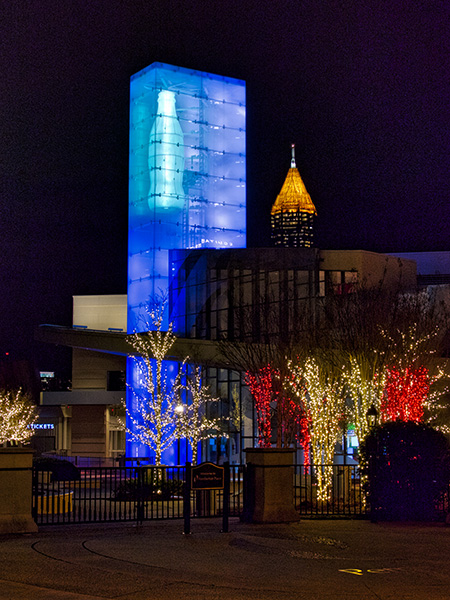 Five image sequence, handheld, processed in Aurora HDR software.
Five image sequence, handheld, processed in Aurora HDR software.
Even though there have been many iterations of HDR software it’s been a while since there was a new player with a different interface that included many new possible settings in and easy to understand interface and, wait for it, layers too! The new software is called Aurora and was designed by HDR travel image specialist Trey working in conjunction with Mcphun Software.
I was given the software to play with… And, I like it!
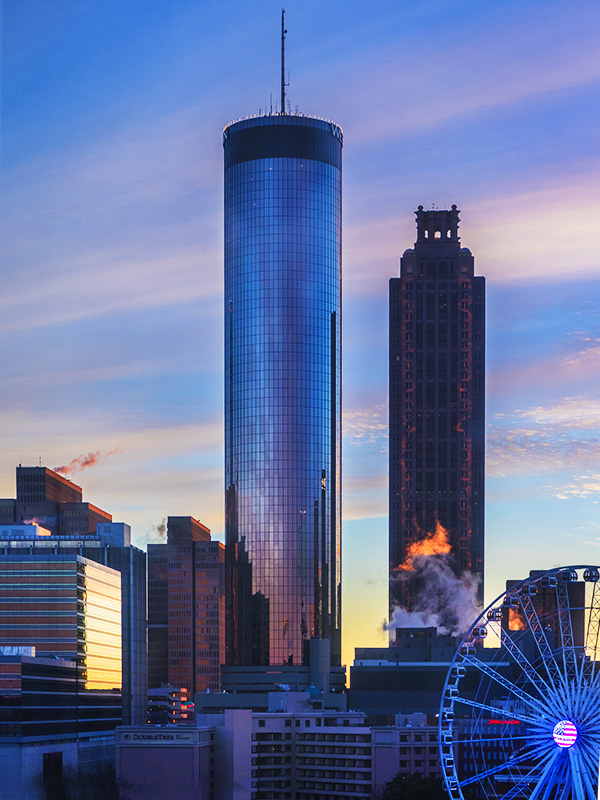 Another 5 image handheld bracket using Aurora HDR software
Another 5 image handheld bracket using Aurora HDR software
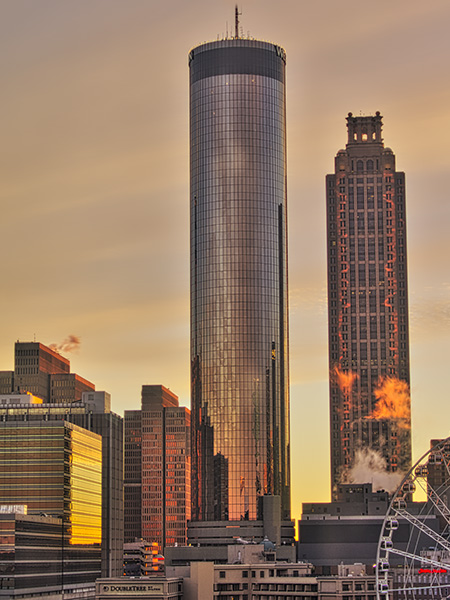 Same image as above processed differently from same exposures.
Same image as above processed differently from same exposures.
It gives you the ability to totally go HDR berserkers! Or, create a very natural scene with full dynamic range. Or somewhere in between so you can have the best of all worlds. An artistic, realistic representation of a scene that DOESN’T SCREAM HDR!!
All images were captured with the Panasonic Lumix GH4
Yours in Creative Photography, Bob
PS – At this time Aurora is only available for the MAC platform at the moment

 Weisman Museum IR capture Lumix G6 Camera converted to Infrared Capture by LifePixel Processed in Adobe Camera RAW and Skylum (AKA MacPhun’s) Luminar
Weisman Museum IR capture Lumix G6 Camera converted to Infrared Capture by LifePixel Processed in Adobe Camera RAW and Skylum (AKA MacPhun’s) Luminar Here’s a color capture made with the Lumix GH5. Processed in Adobe Camera RAW and Skylum (AKA MacPhun’s) Luminar
Here’s a color capture made with the Lumix GH5. Processed in Adobe Camera RAW and Skylum (AKA MacPhun’s) Luminar While not showing off the architecture quite as much I feel the framing made for a more interesting photo.
While not showing off the architecture quite as much I feel the framing made for a more interesting photo. Details can always add to the story. I liked the barren tree against the architecture in this image.
Details can always add to the story. I liked the barren tree against the architecture in this image.























